Wednesday, January 30, 2013
Sotheby’s Surrealist Art Sale: 5th February 2013 - Salvador Dalí, René Magritte, Joan Miró Tuesday 5th February 2013
Sotheby’s London Surrealist Art Evening Sale on Tuesday 5th February 2013 will present exceptional works including one of Salvador Dalí’s most accomplished portraits, Portrait of Mrs Harrison Williams (est. £1.5-2 million), René Magritte’s arresting painting Les Belles Relations (est. £2- 3 million) and Joan Miró’s Le fermier et son épouse (est. £5.5-7.5 million), among others.
Highlighting the sale is Le fermier et son épouse (est. £5.5-7.5 million), an intense and brilliantly coloured painting by Joan Miró. The work was executed in 1936, a time when the artist was reaching wide-spread international recognition, with his works participating in now legendary Surrealist exhibitions including the International Surrealist Exhibition in London and Fantastic Art, Dada & Surrealism at the Museum of Modern Art in New York. The painting depicts a Catalan farmer and his wife, surrounded by the landscape of Montroig and farm animals. Summarising the significance of this farm when working on a painting depicting it in 1928, Miró remarked that the work was: “a résumé of my entire life in the country. I wanted to put everything I loved about the country into that canvas - from a huge tree to a tiny little snail. I don't think it makes sense to give more importance to a mountain than an ant (but landscape artists just can't see that).” = The powerful composition Le fermier et son épouse from one of the most turbulent periods of Miró's career was painted in the lead-up to the outbreak of the Spanish Civil War in the summer of that year. For many decades the painting was in the collection of the great American film director Billy Wilder (of Some Like It Hot and Sunset Boulevard fame). The work was not seen in public until 1989, when Billy Wilder’s collection was sold at auction in New York.
The fragmentation of the human body and depiction of isolated body parts in René Magritte’s Les Belles Relations (ext. £2-3 million) is not only an important theme in the artist’s works, but also one that expresses the essence of Surrealism in general. It was this arresting work that was chosen as the icon of the now-famous Surrealist exhibition Two Private Eyes, held at The Solomon R. Guggenheim Museum in New York in 1999, featuring on the exhibition posters. The imagery of the present composition has its roots in Magritte’s celebrated bowler-hatted man, which has undergone several metamorphoses in which the man’s head has gradually disappeared, giving way to an impersonal assembly of its main parts. It is by combining the subject of a faceless modern man with the timeless and the unknowable, that Magritte questions our perception of reality and unveils the mystery hidden in everyday images.
One of Salvador Dalí’s most accomplished portraits, Portrait of Mrs Harrison Williams, was commissioned directly from the artist and painted by him in 1943. Estimated at £1.5-2 million, the painting - offered for the first time at auction - depicts Countess Mona Bismarck (1897-1983), who was at the time of the portrait married to Harrison Williams, reputed to be one of the wealthiest men in America. After their marriage in 1926 she swiftly became known as one of the most glamorous and beautiful women of her day; becoming the first American to be acclaimed as ‘the best-dressed woman in the world’ by the luminaries of fashion.
Dalí's dazzling depiction of the legendary Mona Bismarck is filled with classical allusions and Surrealist symbolism making it one of the most ambitious pictures he had produced by this point in his career. The painting was executed just three years after Dalí arrived in New York City, having fled Paris with his wife Gala in 1940. After his arrival, he was swiftly assimilated into the group of European Surrealists that had coalesced there at the outbreak of World War II. Together with them, he mingled with many of New York’s social luminaries, receiving from them prestigious commissions for works such as this.
Surrealism by Max Ernst (est. £1.5 -2 million) was painted in New York in 1942 a few months after the artist’s escape from war-torn Europe. Ernst’s standing as one of the foremost Surrealist artists prompted Duchamp to request from him a painting for First Papers of Surrealism, the show that he was organising in New York. This exhibition, the first devoted to Surrealism since the outbreak of war, focused on the work of Ernst, Duchamp, Masson, Matta, Breton, Dominguez, Lam, Tanguy and many other artists who had fled Europe from Nazi persecution. The work to be sold exemplifies the innovative techniques of representation that Ernst was developing in New York, and greatly influenced the next generation of American artists (it was among a group of Ernst’s paintings from 1942 said to have been admired by Jackson Pollock and Robert Motherwell) and would prove influential on the emergence of Abstract Expressionism. Surrealism was exhibited in the Max Ernst 2005 retrospective at the Metropolitan Museum of Art, New York.
Painted in 1941, Les Courtisanes (est. £1-1.5 million) is an exceptional example of Paul Delvaux's painting. As in his finest compositions, it combines the motif of mysterious female nudes placed against a classically inspired architectural backdrop. Demonstrating the influence on Delvaux of Cézanne - in the composition, spacing and individual poses of the nudes, and in the overall concept of a bathing scene - the painting depicts the figures on a balcony by the sea, dominated by the large sky. The nudes and semi-nudes that we see before us in the guise of bathers by the sea are no doubt the courtesans referred to in the title of the work.
Composition by Yves Tanguy (est. £400,000 - 600,000), which comes to the market for the first time in 80 years, was executed in a year that marked a watershed in the artist’s career - 1927. It was during this year that he began to create works that, through their ingenuity and beauty, firmly established the style which became the defining aesthetic of Tanguy’s art. He had by then become a highly accomplished painter and in complete command of a new personal Surrealist language which was often based on his childhood fascination with the sea. In the same year he was recognised by his fellow Surrealists by being given his first one-man show at the Galerie Surréaliste in Paris.
The luminous blue of the upper composition is enlivened by the presence of a biomorphic figure who stalks the ocean floor. Though Tanguy received no formal artistic training, his childhood summers spent near Finistère in Brittany, on the western coast of France overlooking the Atlantic Ocean, had a profound influence on his style. Composition is included in the forthcoming Yves Tanguy Catalogue raisonné.
Christie’s: The Art of The Surreal 6 February 2013: Joan Miro,Yves Tanguy, Max Ernst, Paul Delvaux, René Magritte, Max Ernst
Joan Miró’s rare work L’Echelle de l’évasion, (The ‘Ladder of Escape’) - which comes to the market for the first time in almost 60 years and has not been seen in public for over half a century - leads Christie’s The Art of The Surreal 6 February 2013. , which presents landmark works by the leading names of the Surrealist movement, from René Magritte and Max Ernst to Paul Delvaux and Óscar Domínguez.
Painted in December 1939, L’Echelle de l’évasion (The ‘Ladder of Escape’) by Joan Miró (1893-1983) is one of two pivotal works with this title which he executed at this significant period in his career (estimate: £5-8 million, illustrated top left). The other one, a gouache from January 1940 - which is one of the very first of the artist’s Constellation series - is now in the Museum of Modern Art, New York. The ‘Ladder of Escape’ was an important and much repeated motif throughout much of Miró’s work from the early 1920s onwards. Seemingly bridging two worlds, the ladder often served as a potent metaphor for the artist’s own ‘escape’ from ‘reality’ into the world of his art. Executed whilst living in Normandy, France, during the months of the so-called ‘phoney war’ of 1939 when France anxiously awaited the German invasion, L'Echelle de l’évasion is the culmination of a series of new works marking Miró’s flight from the grim realities of Europe’s present circumstance. It was amidst the relative stability and rustic calm of the Normandy countryside that he was able to focus his energies and experience on the creation of an intensified vision that embodied several of his favourite themes: birds, women and, above all, the night sky. In the wake of Franco’s victory, Miró sought an art that would deliberately invoke a universal sense of the mystery and magic of life, aiming to create an art whose inventiveness, originality and playfulness would sparkle and shine in direct contrast to the encroaching darkness and tragedy that he and many others now felt surrounding them. One of the very last of nine paintings executed on burlap, known as the Varengeville II series, L'Echelle de l’évasion is among the most colourful and densely worked of these pictures.
The ‘escape ladder’ in this work is shown leading to a world with no dividing lines, where both macrocosm and microcosm are intertwined. Its realm is one where surface and image have combined, where, in complete contrast to the external ‘real’ world of violence, discrimination and division of this time, sky and earth, birds and people, abstraction and figuration, along with the domains of the conscious and the unconscious, are all seemingly interrelated and interwoven within the field of the creative act. Miró saw this act of concentrating on such a holistic vision as both one of political defiance and of artistic survival.
Miró’s sculptures were the crowning achievement of his late career. His monumental Femme (Femme debout) is a powerful celebration of fecundity, primal instincts and the creation of life (estimate: £3-5million, illustrated left). Conceived in 1969, it has not been seen in public for over two decades, having been in a private New York Collection for over 30 years. It is one of a small group of large-scale bronzes inspired by Miró’s first experiments in sculptural modelling almost two decades earlier. Femme began as a table-top sized figurine in clay, which Miró created when he was making ceramics with Josep Llorens Artigas in Barcelona in the late 1940s. Reminiscent of a Neolithic fertility goddess, Femme presents large conical breasts, protruding buttocks and a tear-shaped recess, which is a typically Miró-esque emblem of her sex. The work can also be read as an enlarged human face, a duality that illustrates Miró’s metamorphic understanding of what he termed humankind’s ‘true reality,’ where forms give birth to other forms, constantly changing into something else, creating a universe of signs and symbols in which figures pass from one realm to another. Like much of the artist’s work, Femme departs from representation and reality in an attempt to stimulate the imagination. Miró is one of those very few artists who mastered everything he tried - painting, murals, printmaking, costume design, poetry, sculpture and ceramics. Femme is one of seven casts that is signed by the artist, and it is the first of three artist’s proofs from that edition; he was involved in every stage of its production. Additional casts of Femme are held in the collections of the Musée National d'Art Moderne, the Centre Georges Pompidou, Paris, the Detroit Institute of Arts, and the Walker Art Center, Minneapolis.
Offered at auction for the first time, Les Nymphes des eaux (The Water Nymphs) is one of a group of dark, foreboding and extraordinarily ambient paintings that Paul Delvaux (1897-1994) made in the years running up to the Second World War, it is also one of the most elaborate, complex and detailed compositions in the artist’s entire oeuvre (estimate: £3-5 million, illustrated page one, top right). Belonging to a series of works that are among the most powerful of any in Delvaux’s career, it is a fascinating visual compendium of many of the central themes running through the artist’s dream-like landscapes of the late 1930s. Painted in 1938, the year that Delvaux first came to prominence on the Surrealist scene, Les Nymphes des eaux is part a group of paintings from this vital period dominated by female nudes seeming to materialise like organic blooms from the landscape. It is centred on a group of naked female bathers apparently frolicking or languishing amidst the choppy windswept waters of the North Sea, establishing the painting as an extraordinary exercise in dramatic and unsettling contrasts. They are light, joyous, relaxed, energised and erotic pictorial elements that infuse what would be an otherwise bleak and somber coastal landscape with a powerful and uncanny sense of mystery and optimism. In the foreground the fluid waves are shown lapping against the hard-edged rectangles of paved concrete slabs, while the shoreline is bordered by red-brick industrial buildings that include a blast furnace pumping smoke into the sky. Alone on the shore by the furnace stands the single figure of a man in a suit. Tiny, almost forgotten amidst the parade of powerful voluptuous female figures, his inclusion is nonetheless a forceful one. Delvaux saw such figures as ‘elements of a reality that is transmuted by the way I situate them...their intrusion into my paintings, particularly alongside female figures - naked women - is partly intended to create a shock, a shock that results precisely from that very juxtaposition.’
- A remarkable group of nine works by Renè Magritte(1898-1967) is led by
Le plagiat (Plagiary), 1940, which unites nature, beauty and mystery (estimate: £2-3 million, illustrated right). Never before offered at auction, it has been in a private Belgian collection since it was painted. This is an incredibly rare work as while many of Magritte’s motifs were revisited in a string of pictures, he created only one other oil painting titled Le plagiat, in 1942 in a vertical format. This work shows the elective affinities which underpinned the greatest of his paintings: a bunch of cut flowers has been shown in a vase, yet instead of the flowers themselves, the viewer sees a related subject, a blooming landscape in a cut-out silhouette. Next to the white vase is a nest with three eggs, an enigmatic presence in the interior view which again allows the outdoors to invade an indoor space. First exhibited in a Salon in Liège in 1940, the year it was painted, Le plagiat was acquired from the exhibition by Ernest van Zuylen, a member of a wealthy merchant family who was both a keen supporter of the arts and a prolific photographer. Magritte painted this original, first version of Le plagiat in January 1940, shortly before the invasion of Belgium but after the beginning of the Second World War. This was a moment of incredible international tension, not least for an artist associated with a subversive view of the world and with political statements that one could imagine would not sit well with any occupying forces. While some artists, especially among the Surrealists, sought to channel, express or address this tension, Magritte instead sought to create a slender ray of light, a beacon of hope. A meditation on beauty, Le plagiat shows a room filled with a bunch of flowers which itself becomes a form of window or portal opening up to a lyrically idyllic landscape. Magritte continued to channel positive feelings in his work throughout the Occupation, following the invasion which occurred only months after Le plagiat was painted.
A miraculous apparition dominates Tous les jours (Everyday), painted by Renè Magritte (1898-1967) in 1966 (estimate: £1.8-2.5 million, illustrated below). Having joined an important private collection only a year after it was executed, it has remained in the same collection – from which it is now offered - for over 40 years. Against the backdrop of a dramatic, largely barren, landscape are the eyes, nose and mouth of a man, hovering in the air and bracing the viewer with an uncanny gaze. Tous les jours was one of a group of pictures that Magritte created during this period, exploring the concept of emptiness and combining it in several cases with the tradition of portraiture which he had gleefully disrupted and undermined throughout his career. The face of the subject appears almost discernible, despite being fragmentary, in part due to the striking scale of the nose. In this sense, Magritte has conveyed an impressive but certainly ambiguous sense of realism through this deliberately absurd composition. Such isolation of facial features first appeared in Magritte’s work only shortly before this picture was painted in Le paysa ge de Baucis, which had emerged as his solution to one of his visual quandaries: how to represent the space between a woman’s hat and her dress. In 1966 he found the solution in male form noting: ‘I have discovered how to paint the emptiness between a hat and a man’s suit without suggesting “The Invisible Man” ‘by including floating facial features - the eyes, nose and mouth - which articulate and dramatically highlight the ‘emptiness.’ In Tous les jours, emptiness is pushed to a new extreme as the face is shown against a vast background, rather than hanging within the context of a human head and body. The contrast between the flesh and the rock-strewn scrub and mountains of the landscape adds a textural dimension to the tension between these disparate elements thrusting them into bolder relief. A face appearing in such fragmentary form appears to relate to Magritte’s earlier series, in which the eyes and mouth of a woman appeared in the midst of strings of pearls.
A further important work by Magritte Ceci n'est pas une pomme (This is not an apple), 1964, (estimate: £1-1.5 million) leads a group of four works in The Art of the Surreal Evening Sale which are offered from the former collection of the Scheringa Museum of Realist Art, Holland, as agreed by the Administrator of DS Art B.V., part of the DSB Group, and Deutsche Bank (lots 104,105,106,107).
Machine à coudre électro-sexuelle is one of Óscar Domínguez’s (1906-1957) masterpieces, dating from 1934-35, at the watershed point just after the exciting beginning of his association with André Breton and the Parisian Surrealists (estimate: £1.3-1.8 million, illustrated right). Offered from a private European Collection, this picture is filled with the unique atmosphere of sexuality and brutality that characterise the greatest of Domínguez’s paintings, reflecting on his own troubled life and character while chiming perfectly with the weird and warped world of the Surrealists. The importance of Machine à coudre électro-sexuelle is reflected in its extensive exhibition history, beginning just after it was painted, which has led to it being one of the artist’s most recognised works. It is a mark of the importance of this picture that it was initially owned by Eduardo Westerdahl, the main figure in the small Surrealist movement that had grown in Domínguez’s native Canary Isles and the publisher of the Gaceta de Arte which was one of the central focal points for the avant-garde in the Canary Isles and beyond. The relationship between this painting and the Parisian Surrealists is clear from the theme itself which appears to be Domínguez’s own twisted re-imagining of the celebrated phrase, ‘Beautiful as the chance encounter of a sewing machine and an umbrella on a dissecting table’ taken from the Chants de Maldoror, poems by the 19th century writer Isidore Ducasse, the so-called Comte de Lautréamont, which were considered a vital precursor of the Surrealist spirit. When Domínguez joined the Surrealists in Paris, he reinvigorated the movement. One of the great pioneers of the objet surréaliste, he was also the inventor of the decalcomania technique that would result in some of Max Ernst’s greatest paintings and which was wholeheartedly embraced by André Breton.
À l'intérieur de la vue is one of an important and sustained series of paintings of bird-like figures within eggs bearing the same mysterious title that Max Ernst (1891-1976) made in 1929 and out of which the artist’s own personal archetype the bird-man ‘Loplop’ was seemingly born (estimate:£1– 1.5 million). Loplop was a bird-like creature who would ultimately play a central role in Ernst’s work of the 1930s taking on many different forms within it. Usually male, though sometimes androgynous, Loplop was what Ernst later described simply as the “Bird Superior, a private phantom very much attached and devoted to me.” Loplop made his earliest appearances in Ernst’s work in his collages of the late 1920s, and was soon recognised by the artist as a kind of alter-ego or mystic guide to the netherworld of his unconscious imagination. Birds always played a profound part in Ernst’s imagination. Throughout his life, the artist grew increasingly to look like one, and as a child, the bizarre death of his pet parrot at precisely the same moment his sister was born had a profound and long-lasting impact on him. Paralleling the birth of Loplop from the unconscious creative acts of the artist, here, within this simple graphic device of a drawn egg-shape, a group of bird-like forms each drawn with a single line appears to be growing from the wandering graphic path of Ernst’s line, while also collectively rendered as if caught in various or gradual stages of evolution. At the heart of Ernst’s practice in this respect was what he once referred to as a ‘seeing into’ forms and then hatching’ them ‘out’ through the practice of making them. It was a practice that, as he acknowledged early on with respect to his collages, had its roots in Leonardo da Vinci’s observation that the random patterns of clouds or cracks and marks in a wall can prompt the imagination to see into these forms other new figures and forms.
Elsewhere in the sale other works are led by Yves Tanguy’s (1900-1955) L'Arc volant (The Speeding Bow), 1945, which bridges the boundaries between abstraction and figuration, landscape and still-life, Surrealist dreamscape and automatist form (estimate: £900,000-1.2 million, illustrated right).
The roll call of further key artists featured includes:
Salvador Dali,
Francis Picabia,
Giorgio de Chirico, Jean Arp, Kay Sage, Konrad Klapheck, Wifredo Lam, Roberto Matta and Victor Brauner.
Manet and the Execution of Maximilian
Manet and the Execution of Maximilian united for the first time in the United States a series of compositions created between 1867 and 1869 by Edouard Manet that depict the execution of Emperor Maximilian of Mexico. The exhibition—featuring the series of three large paintings, an oil sketch, and one lithograph—examined the evolution from one painting to the next, which was fueled by a steady stream of written and graphic accounts of the event. Also included in the exhibition were selected works by photographers and other artists who documented the event or whose pictures were likely sources for what Manet produced.
Additionally, a small group of canvases by Manet is included to add context to the Maximilian works. This exhibition was on view from November 5, 2006, to January 29, 2007.
Napoleon III, seeking to assert France’s economic and political power over Mexico, appointed Maximilian, a member of the Hapsburg family of Austria, emperor of that country in 1864. Three years later, Maximilian was abandoned by the French government when Napoleon III withdrew troops assigned to protect him, and was subsequently tried and executed for treason by the resurgent Mexican army. News of the execution reached Paris on July 1, 1867, and Manet, opposed to Napoleon III’s policies, immediately began the first painting in the series.
History
In 1861, Benito Juárez became President of Mexico and, due to the collapse of the nation’s economy, declared a moratorium on payments of foreign debt. Britain, France, and Spain decided to coerce him into payment, but France was the only country that took the initiative seriously. Napoleon III of France disliked Juárez’s liberal beliefs and felt that Mexico could fall prey to United States aggression. Napoleon III sought to assert France’s economic and political power over Mexico and sent Archduke Maximilian of Austria, a member of the Hapsburg family, to assume leadership of the alliance.
In 1863, a French expeditionary force expelled Juárez from Mexico City, allowing Maximilian to assume his position as emperor there one year later. Three years after Maximilian settled in Mexico City, Juárez’s guerilla forces gained strength, and French control of Mexico declined. Napoleon III, convinced he had made a mistake, withdrew French troops from Mexico, abandoning Maximilian and his few supporters. Juárez’s army easily defeated Maximilian at Querétaro, north of Mexico City, in May 1867. Maximilian and two of his generals—Miguel Miramón, who had been president of the Mexican Republic before Juárez, and Tomás Mejía, an indigenous soldier from the hills outside Querétaro—were tried on June 13, and the following day the death sentence was announced for all three defendants. As the news spread, some Mexican supporters wanted to aid Maximilian’s escape, but he refused. Others pleaded with Juárez to pardon him, but he declined, fearing that Maximilian would set up a government in exile. Many Europeans, ranging from Queen Victoria of England to the author Victor Hugo, sent telegrams to Juárez urging him to spare Maximilian’s life. On June 19, 1867, Maximilian and his two generals were executed by the firing squad of Juárez’s army on Cerro de las Campanas (Hill of the Bells), near Querétaro.
The Execution of Maximilian Series
Manet, who was opposed to Napoleon III’s policies, responded to the ongoing accounts of Maximilian’s death as they were published in French journals. These accounts—which came from eyewitnesses, signed and anonymous letters, and various foreign publications—presented many inconsistencies about the time of day and site of the execution and the number of victims and soldiers involved. This exhibition included a selection of photographs, some taken by François Aubert, Maximilian’s official photographer, and engravings that Manet might have seen published in the French newspapers.
The series included three large paintings that currently reside, in order of creation, in the Museum of Fine Arts, Boston; in The National Gallery, London; and in the Städtische Kunsthalle, Mannheim. The other two works are a small painting that served as a study for the Mannheim painting, now in the Ny Carlsberg Glyptotek, Copenhagen, and a lithograph, in The Metropolitan Museum of Art, New York, which was made in the same period as the Copenhagen painting.
The first painting in the series, begun in 1867, is a large canvas with nearly life-size figures. The painterly brushstrokes and the atmospheric quality may reflect the ambiguity of early reports of Maximilian’s death, as well as revealing the influence of
Francisco de Goya’s The Third of May, 1808, which Manet had seen in Madrid two years earlier. Manet changed elements in the painting as news filtered into France. For instance, the flared trousers and outlines of sombreros indicate that Manet had originally painted the soldiers in Mexican guerilla uniforms rather than the uniforms of Juárez’s regular army.
By autumn 1867, as more details about Maximilian’s death were published, Manet set aside the first painting and began a second, more refined canvas (1867–68). This second painting formed the basis on which the remaining works were composed. He reworked the background, altered the distance between the victims and the firing squad, and changed the uniforms of the soldiers so that they resembled French army uniforms. This painting exists in fragments, having been damaged while in storage in Manet’s studio. In the 1890s, Edgar Degas sought out the surviving fragments and brought them together again. The National Gallery acquired the fragments in 1918, and in 1992 reassembled them onto one canvas to afford at least a partial sense of what the composition had originally looked like.
The small oil sketch (1868-69)
and the lithograph (1868-69) were made in preparation for the final painting (1868–69), which is the largest and most definitive work. New reports and photographs pertaining to the execution continued to appear in French newspapers, influencing Manet’s final work.
To this composition, Manet added a background landscape with spectators that was borrowed from an earlier painting from 1865–66,
titled Bullfight, which in turn referenced
Francisco de Goya’s La Tauromaquia (Bullfight) prints from 1816. This painting and a print from Goya’s series were also included in this exhibition.
In addition to Bullfight, the exhibition included others works by Manet to add historic and aesthetic context to the series.
The Dead Toreador was a part of a composition called Incident in a Bullfight, which Manet began in 1862 after the French defeated Juárez’s forces. Manet excised this portion of the painting, reworked it and exhibited it in 1867 as The Dead Man. This title change coincided with Maximilian’s surrender to Juárez’s forces.
Also included was
The Funeral (c. 1867), inspired by the funeral of his friend, the poet Charles Baudelaire, which Manet created while he was working on the Maximilian series. This painting would become the source for the cemetery and landscape in the background of the final painting of Maximilian’s execution. The Maximilian series also influenced a later work on paper titled The Barricade (1871), which depicts a crowd of Communards in the streets of Paris being fired upon by French soldiers, the figures of which are derived from a tracing of the Maximilian lithograph.
PUBLICATION:
In the book that accompanied this exhibition, John Elderfield analyzes and documents the creation of the works and discusses their art-historical importance in the context of modern art. The book also includes a bibliography and newspaper excerpts from Parisian newspapers that circulated in Paris at the time of Maximilian’s execution. The book was published by The Museum of Modern Art 200 pages; 112 illustrations.
Georges Seurat: The Drawings
Georges Seurat (French, 1859–91), one of the most influential painters of the nineteenth century, was a prolific draftsman who, despite a brief career, created an extraordinary body of work on paper. Georges Seurat: The Drawings was the first exhibition in almost 25 years to focus exclusively on the artist’s luminous drawings. These drawings played a crucial role in Seurat’s career and are often seen as touchstones for the art of the twentieth century and forerunners of abstraction. This comprehensive exhibition surveyed his entire oeuvre, with over 135 works, primarily the artist’s conté crayon drawings, along with a small selection of oil sketches and paintings, and explores his materials and methods, his subject matter, and the relationship between his drawings and paintings. The exhibition, organized by Jodi Hauptman, Associate Curator, Department of Drawings, The Museum of Modern Art, was on view from October 28, 2007, through January 7, 2008.
This exhibition showcased one of Seurat’s greatest achievements: the artist’s exploration of the dramatic relationship between darkness and light. The placement of dark next to light so that each would amplify the other—an effect Seurat called “irradiation”—generated a soft halo or glow around his figures. To achieve such glowing luminosity and velvety blackness, Seurat tailored his application of conté crayon to a French handmade textured paper called Michallet, leaving parts of the paper untouched to indicate illumination while building up his medium to intensify shadows. Ms. Hauptman stated, “Bathed in light that shimmers around them, nurses, street sweepers, elegant ladies, and a host of others emerge out of a mysterious, unreadable darkness.”
Most of Seurat’s drawings were created as independent works. These drawings were featured in the exhibition, along with a selection made during his academic training and groups of studies created for his renowned monumental canvases, such as
A Sunday on La Grande Jatte (1884–86)
and Bathing Place, Asnières (1883–84).
Seurat, best known as the leader of the Neo-Impressionist movement and inventor of pointillism, a form of painting in which tiny dots of primary colors are used to generate secondary colors, had a tragically short artistic career that ended with his death at age 31 in 1891.
Despite the lack of Seurat’s letters, diaries, archives, and photographs, it is known that drawing was of great importance for the artist, as seen from his extensive output—an extraordinary 500 works on paper (with about 230 dating from his mature period) have been catalogued.
Georges Seurat was born in 1859 into a Parisian bourgeois family. He began drawing as a boy, starting his formal training in a small neighborhood art school. When he was 18, he entered the Ecole des Beaux-Arts and made numerous drawings from antique sculpture and live models, and copied masterworks by such artists as Ingres, Raphael, and Poussin. During his required military service, completed in Brest, a town in northwestern France (1879–1880), Seurat began to turn away from his Beaux-Arts training. Without models and antique sculptures, Seurat sketched what was available, including his fellow recruits and his own hands. In addition, four sketchbooks (c. 1877–81) show that Seurat wandered through the city observing people and architectural details. In the unfolding of Seurat’s career, these sketches function as a hinge between his academic training and his mature style: the attention to the everyday, the use of cross-hatching for rendering light on a surface, and a line that seems to have an agency of its own rather than functioning as descriptive contour.
Seurat’s first publicly exhibited work was a drawing—
Aman-Jean (c. 1882–83)—at the Salon of 1883.
Though traditional in subject, this large-scale portrait of his friend and fellow artist reveals the formal innovations that Seurat had already developed and would continue to refine throughout his brief career: the massing of tones to shape and form, the use of the conté crayon to create velvety blackness and glowing luminosity, and an evocative softness and mood. Seurat's choice of materials was critical to the look of his mature drawings.
In preparation for this exhibition, drawings in the Museum’s collection were examined closely by MoMA conservator Karl Buchberg with the goal of understanding Seurat’s materials and working techniques. The drawings were examined using low power magnification and other forms of analysis. A French handmade paper called Michallet, a set of black stick media known collectively as conté crayon, and fixative have been identified as Seurat’s most important materials. Mr. Buchberg’s research proves that the layering of conté crayon, the deployment of fixative to protect initial layers, and the judicious use of stumping (in which the medium, once applied, is manipulated with pointed rolls of paper, leather, or cork) are all key artistic techniques.
Seurat exploited the texture of the Michallet paper by stroking the conté crayon across the sheet’s ridges, thus devising his own kind of draftsmanship: he massed dark and light tones, abstracting figures, spaces, and structures; exploited unmarked paper to signify light; incorporated the paper’s surface pattern into his compositions; layered pigment to create a range of densities, from a translucent scrim to impenetrable darkness; and offered accurate descriptions of subjects using the barest of means.
The exhibition also addressesd the relationship between Seurat’s drawings and his paintings and the similar ways he approached these different mediums. Once again, analysis by Mr. Buchberg and other MoMA conservators shows the parallels in Seurat’s exploitation of his chosen support, whether it was paper, canvas, or wood panel. Moreover, lessons learned from working with conté on paper helped Seurat better understand chromatic relationships; in the exhibition visitors will see the links between the artist’s tonal rendering and his particular use of color, as well as the way he uses drawing to refine the positions, modeling, and lighting of his figures. Mr. Buchberg’s research is explored in depth in his essay in the exhibition’s accompanying catalogue and on the exhibition’s Web site, moma.org/seuratdrawings.
Seurat was interested in subjects drawn from urban Paris and its surroundings: modish women and city workers, modern transport and horse-drawn carts, the industrializing suburbs, and the popular entertainment of the day. But in contrast with Seurat’s renowned paintings of nineteenth century leisure, such as A Sunday on La Grande Jatte (1884–86) and Bathing Place, Asnières (1883–84), his drawings present empty places and lone figures. Seurat turned his back on the grand boulevards of Paris, presenting instead gritty and desolate views of Paris’s edges: the fallow area just outside the city walls known as the Zone and the industrializing suburbs with their factories and simple housing.
His rural landscapes, such as The Edge of the Forest (c. 1883) or Haystacks (c. 1882–83) are equally lonely.
Subjects of portraits—including
Embroidery (The Artist’s Mother) (c. 1882–83)—are completely absorbed in solitary activities while his more anonymous figures are often presented with their backs to the viewer or with their faces partially obscured as seen in
The White Coat (Woman with Umbrella) (c. 1883),
The Veil (c. 1882–84), and Seated Woman with a Parasol (study for A Sunday on La Grande Jatte) (c. 1884–85). In his drawings of urban types—including well-dressed women and city workers—Seurat reduced his figures’ bodies to geometric forms and took them out of their contexts while still offering crucial details of their role in the urban panorama (see, for example, Nurse (c. 1882),
Woman in White and Black, (c. 1882), and Market Porter [c. 1882-84]). In this way, he unites the modern and the classical, creating figures with the forms of ancient sculpture but the gestures and attributes of nineteenth-century Parisians.
Toward the end of his career Seurat focused on scenes of popular entertainment, showing the array of amusements—acrobats, clowns, circus performers, singers—available to city dwellers. These works include nine drawings devoted to the café-concert—cafés that featured singers and other performers for an audience drawn from the varied strata of Parisian society.
Seven of the drawings were included in this exhibition and each one offers a slightly different view of a performer (or performers) on stage, from close-up to long views to vantage points deep in the crowded audience, as seen in
At the Concert Européen (c. 1886–88).
PUBLICATION:
The accompanying publication features an introduction and essay by Jodi Hauptman, and essays presenting important new research on Seurat’s artistic strategies, materials, and themes by: Karl Buchberg (MoMA conservator); Hubert Damisch (art historian, Ecole des Hautes Etudes en Sciences Sociales, Paris); Bridget Riley (artist); Richard Shiff (art historian, University of Texas); and Richard Thomson (art historian, University of Edinburgh). The book also includes a chronology, selected bibliography, and detailed checklist. Hardcover: 8 x 10 in. (20.5 x 25.5 cm); 272 pages; 185 illustrations.
Constable's Great Landscapes: The Six-Foot Paintings,
John Constable's (1776–1837) seminal six-foot landscapes — among the best-known and beloved images in British art — were reunited with their groundbreaking full-size sketches for the first time since the artist's death in Constable's Great Landscapes: The Six-Foot Paintings, at the National Gallery of Art, East Building, October 1 through December 31, 2006. Fifty-five works include oils and drawings that are related to the large landscapes, an early pencil portrait, and a series in varied media brought together for the first time, illustrating areas along the Stour River in Suffolk known to many as "Constable Country." The exhibition and its companion catalogue examined why Constable produced the six-foot sketches.
Eight finished six-foot paintings, including
The White Horse (1819),
Stratford Mill (1820),
The Hay Wain (1821),
View in the Stour near Dedham (1822),
The Lock (1824),
The Leaping Horse (1825),
Hadleigh Castle (1829),
and Salisbury Cathedral from the Meadows (1831) were paired with their corresponding full-size oil sketches, while
Chain Pier, Brighton (1827) was presented with related smaller oil sketches.
Two large finished versions of
The Opening of the Waterloo Bridge (c. 1829–1832)
and what is believed to be a full-size sketch from the very end of Constable's life,
Stoke-by-Nayland (c.1835–1837), were also on view.
Constable's Great Landscapes: The Six-Foot Paintings was organized by the National Gallery of Art, Washington; Tate Britain, London, where it was on view through August 28, 2006; and The Huntington Library, Art Collections and Botanical Gardens, California, where it was presented February 3 through April 29, 2007.
The White Horse
Six of the six-foot paintings with full-size sketches depict different aspects of the working life of Suffolk's prosperous Stour River valley—the world of Constable's boyhood—which was conjured up in his London studio from memory and plein air sketches. The first in this early series is
the National Gallery of Art's The White Horse
(c. 1818), made in preparation for the painting of the same title that Constable exhibited at the Royal Academy in 1819.
The resemblance between the finished painting and its sketch is clear, but there have been decades-long disagreements about their precise relationship. In 1984, Charles Rhyne, then a Samuel H. Kress Fellow in the National Gallery of Art's Center for the Advanced Study in the Visual Arts, embarked upon a study of The White Horse sketch. The findings of this first-time scientific examination revealed disfiguring repaint from the 19th century, as well as an abandoned composition underneath that relates to The Valley of the Stour (Dedham from Gun Hill) (c. 1805-1809). The repaint was removed and the work was cleaned, revealing one of the more brilliant and spirited of the six-foot sketches. The restoration dramatically illustrates Constable's working process at this critical turning point in his career.
The Six-Foot Paintings, 1818 to 1837
The six-foot landscapes painted during these years secured both Constable's reputation as a painter and his membership as an associate in the Royal Academy. To create such large-scale works, Constable found he needed an intermediate stage between his small oil studies painted outdoors and the final paintings; he thus chose to work out the diverse elements of the large compositions on a full-scale canvas.
In the late 1820s, Constable began to paint large landscapes of scenery beyond the Stour River valley. His work was profoundly affected by his wife's terminal illness and later death. His grief can be seen in the desolate and turbulent full-size sketch for Hadleigh Castle (c. 1828–1829). In addition to full-size sketches, these later six-foot paintings are accompanied by a variety of preliminary works ranging from very small to half-size sketches.
In his final years Constable painted Salisbury Cathedral from the Meadows (1831), his most overtly religious painting, which shows a new spiritual mood. The Opening of Waterloo Bridge (1832) is his only large-scale view of an urban landscape and was intended to emulate Canaletto and J.M.W. Turner. It was the last work he sent to the Royal Academy for exhibition. In one of his last works, Stoke-by-Nayland (c. 1835-1837), Constable drew upon sketches made many years before to create this complex and personal response to his native landscape.
Catalogue and Curators
Constable's Great Landscapes: The Six-Foot Paintings was curated by Anne Lyles, Tate, Britain, together with Franklin Kelly, senior curator of American and British paintings, National Gallery of Art, Washington.
A fully-illustrated scholarly catalogue discussing the nature and special character of these paintings, their place in modern landscape tradition, and the context of Constable's work accompanies the exhibition. Published by the National Gallery of Art, Washington, in association with Tate Publishing, the catalogue is edited by Lyles and includes contributions by Lyles, Kelly, Sarah Cove, fellow of the International Institute for Conservation of Historic and Artistic Works; John Gage, fellow of the British Academy; and Charles Rhyne, professor emeritus, Reed College, Portland, Oregon.
More Images on exhibit:
Self-Portrait, 1806
pencil on wove paper, 23.7 x 14.5 cm (9 5/16 x 5 11/16)
Tate, Purchase
View in the Stour Valley looking towards Langham Church from Dedham, 1805
watercolor on paper mounted on a second sheet of paper, 48 x 66.4 cm (18 7/8 x 26 1/8)
Tate, Partial purchase and partial loan from the American Fund for the Tate Gallery,
The Church Porch, East Bergholt, 1810
oil on canvas, 44.5 x 35.9 cm (17 1/2 x 14 1/8)
Tate, Presented by Miss Isabel Constable, 1888
A Lane Near Flatford, c. 1811
oil on paper laid on canvas, 20.3 x 30.3 cm (8 x 11 15/16)
Tate, Bequeathed by Henry Vaughan, 1900
Subscribe to:
Posts (Atom)

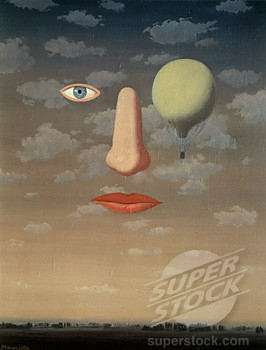

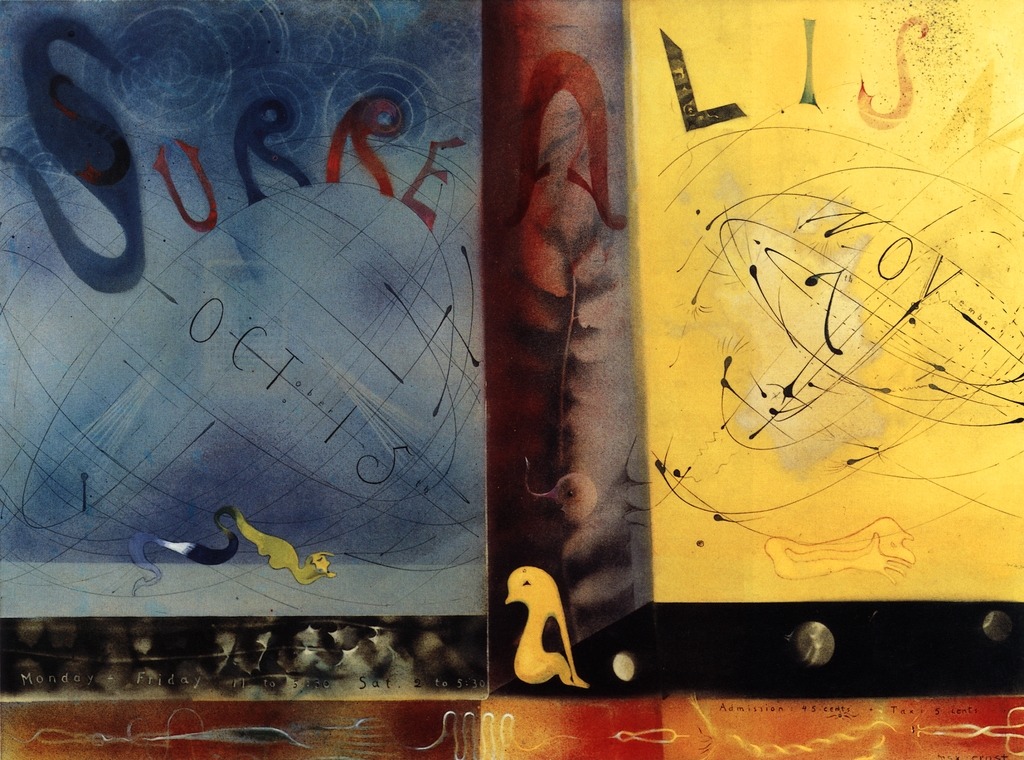


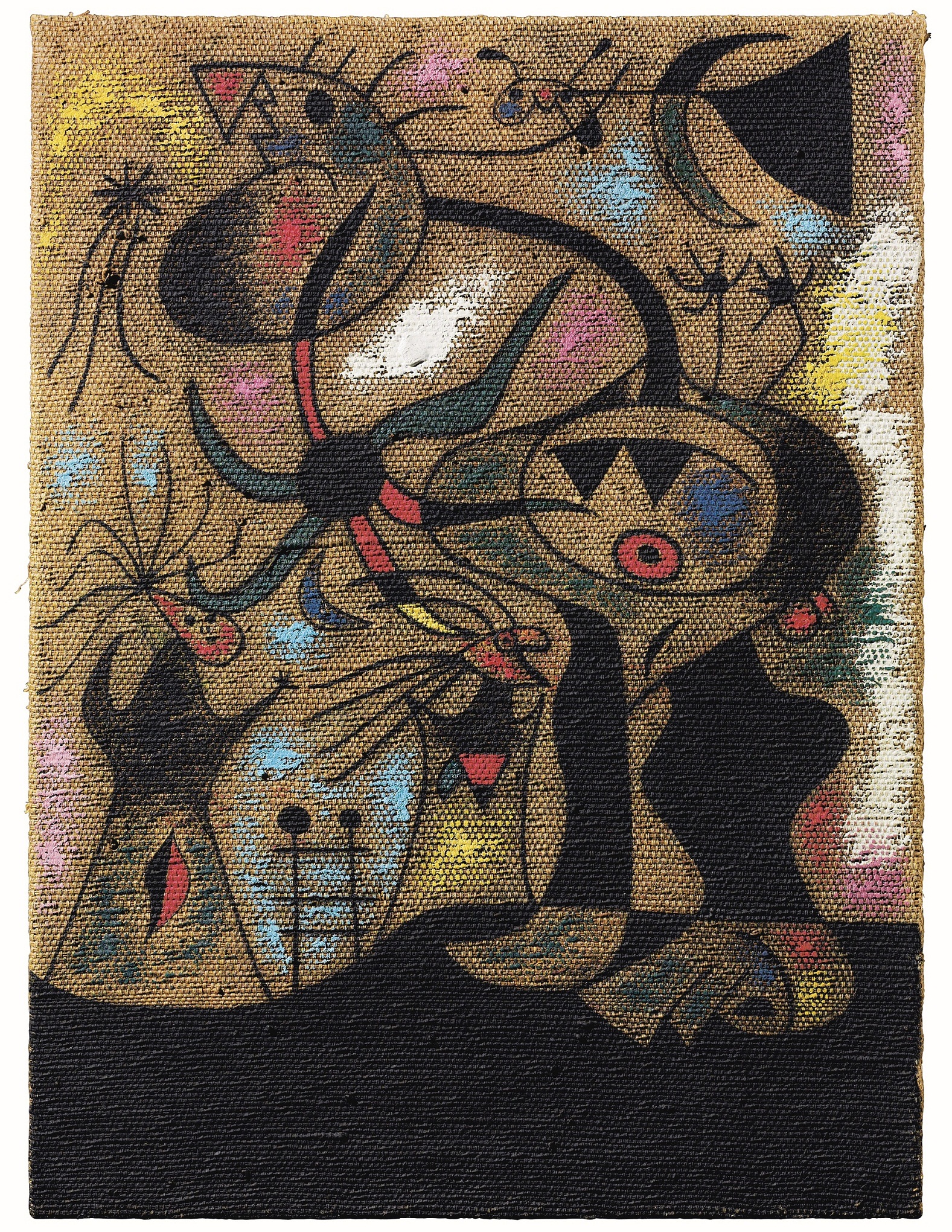

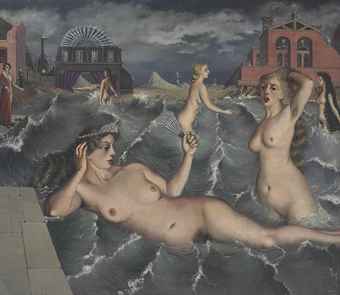


.jpg)
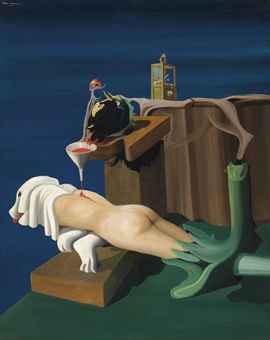


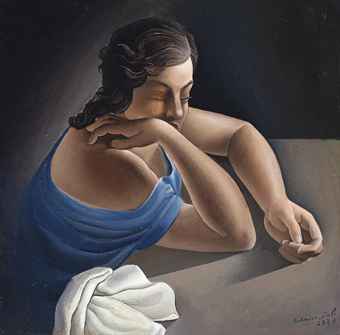
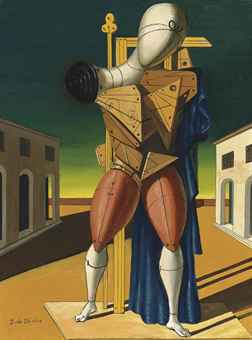

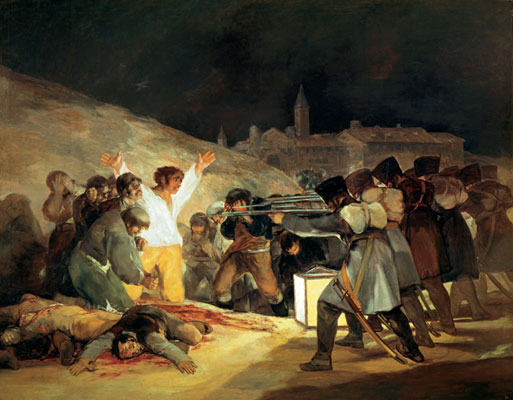
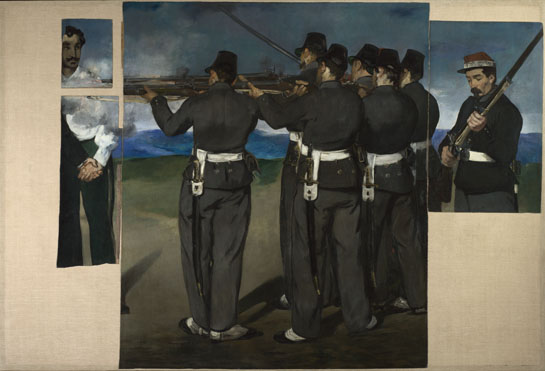
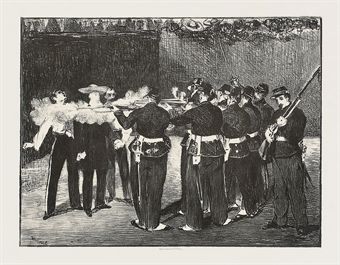
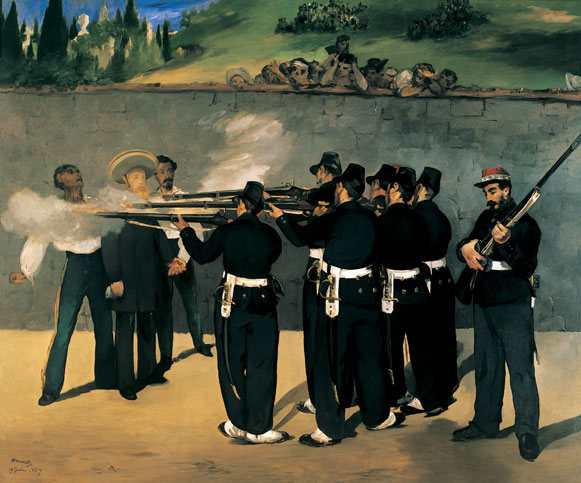
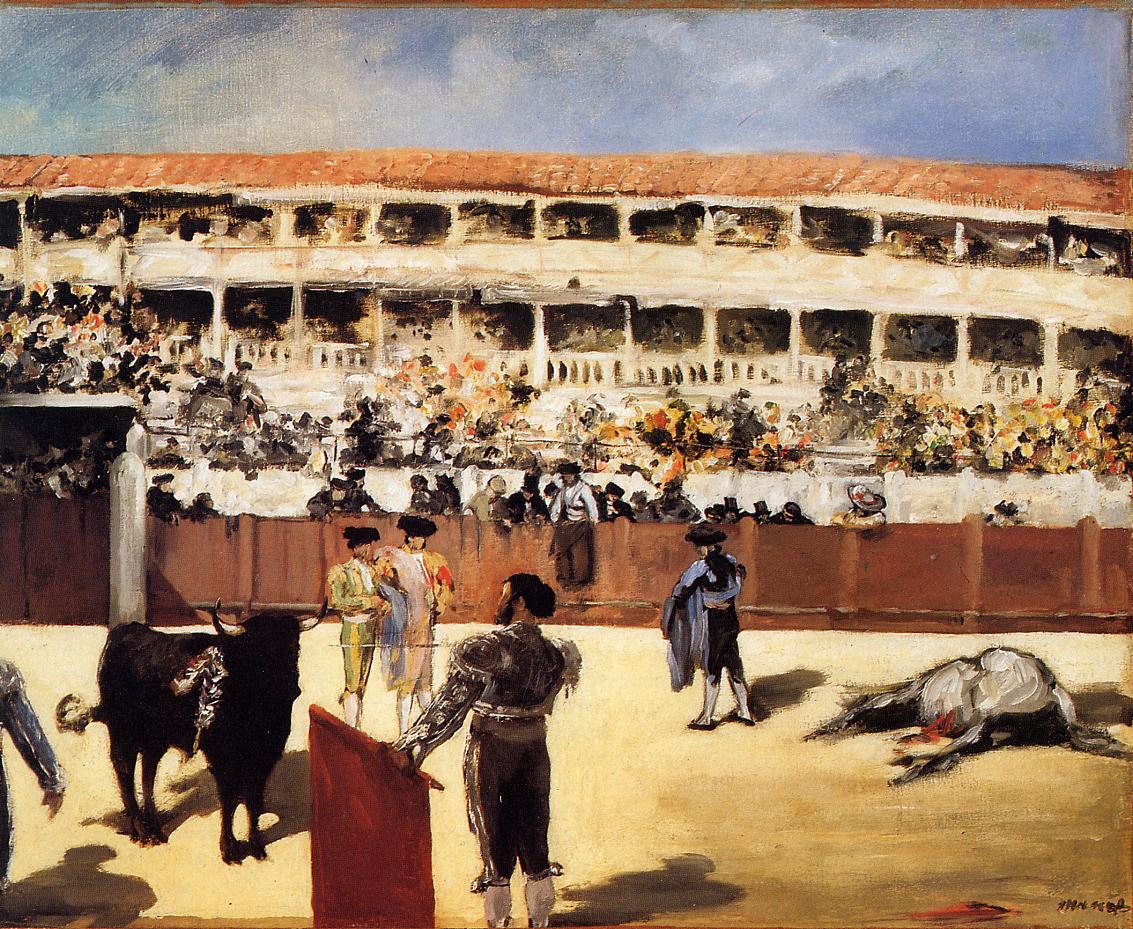





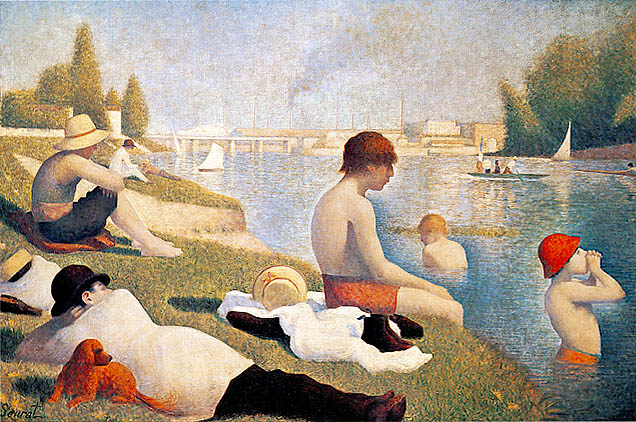



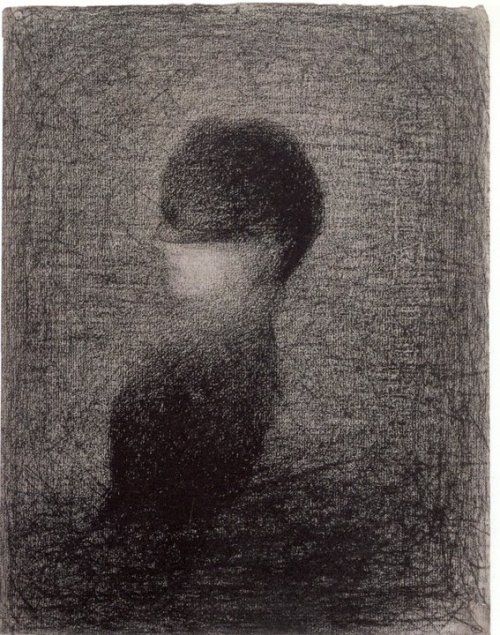
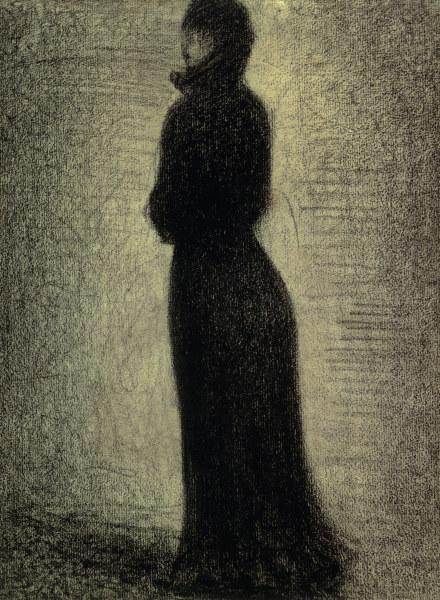




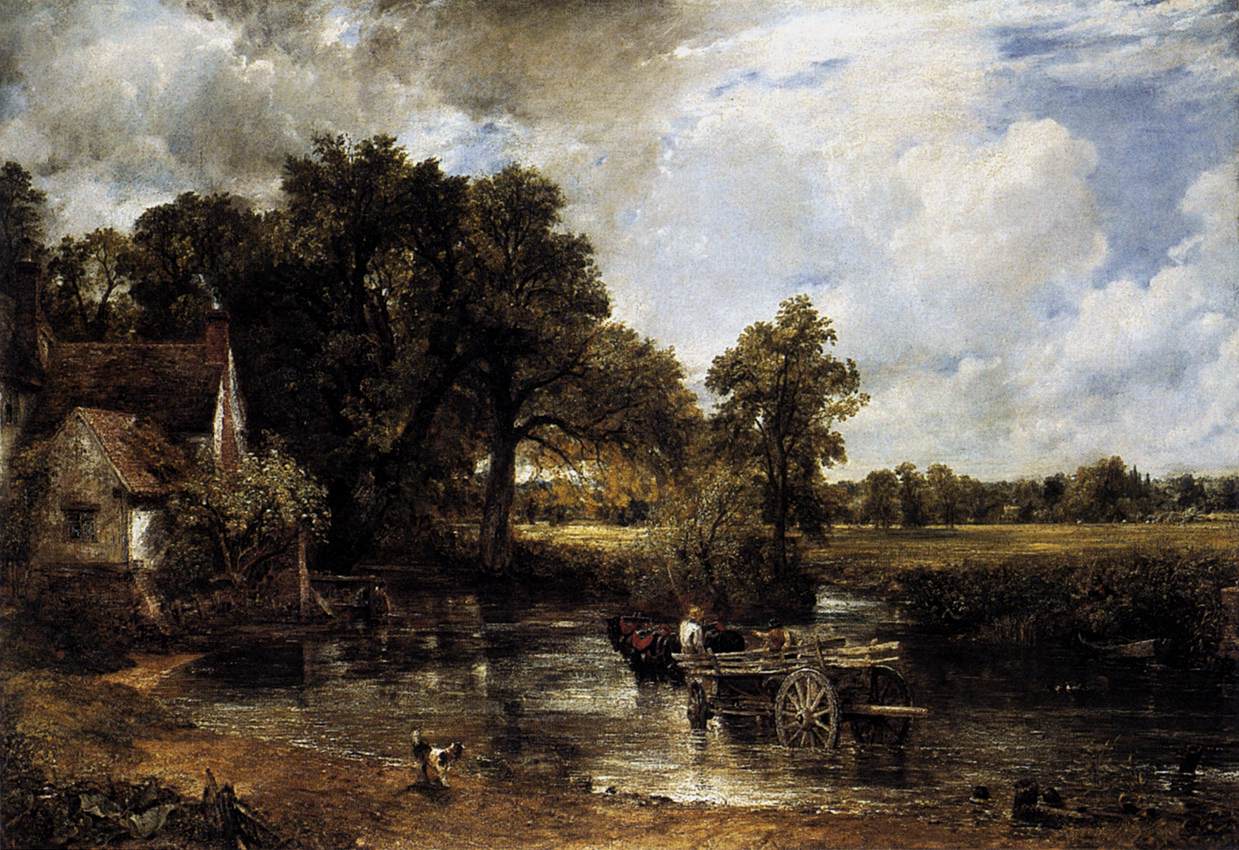



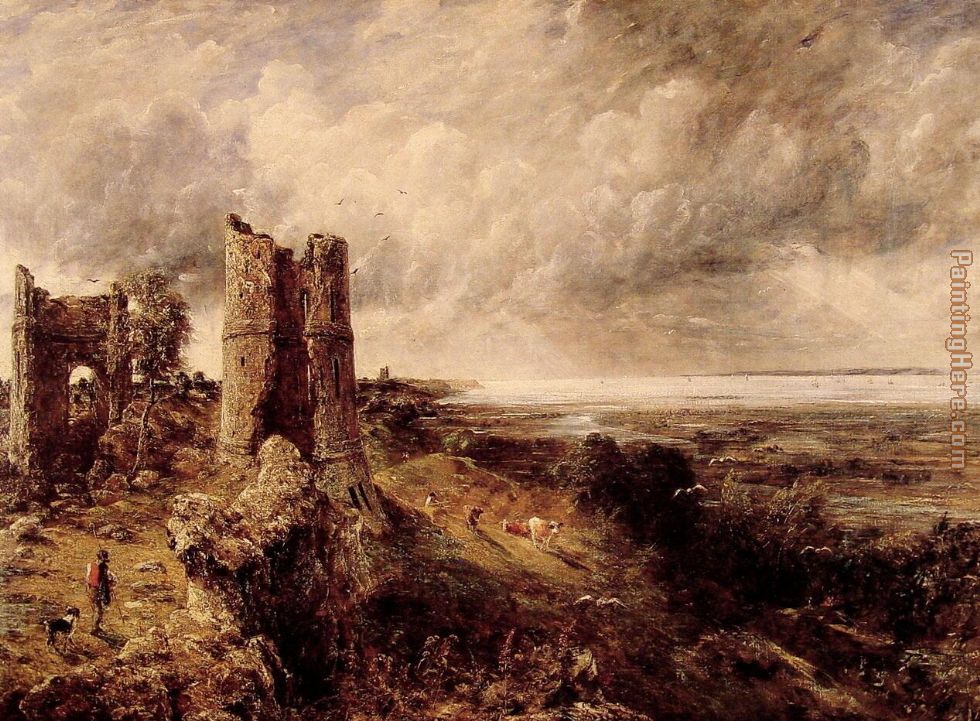
.jpg)








